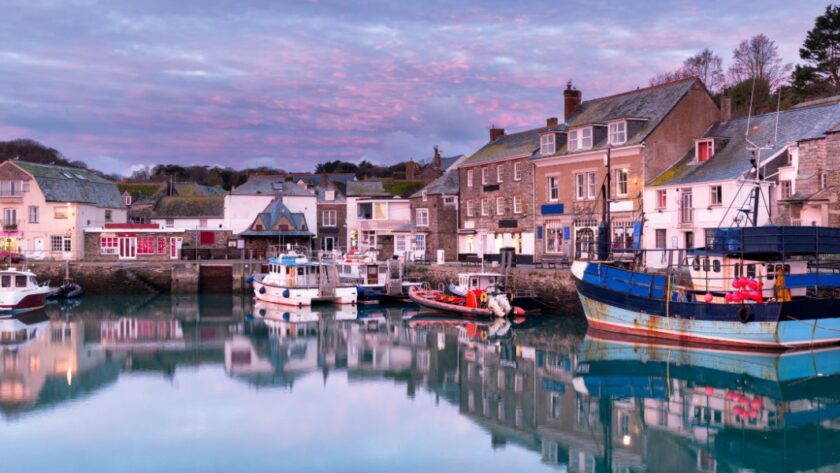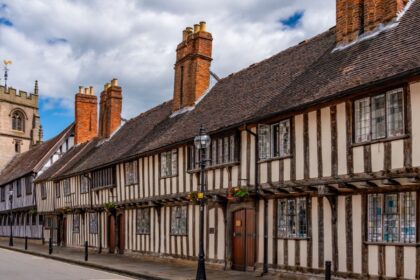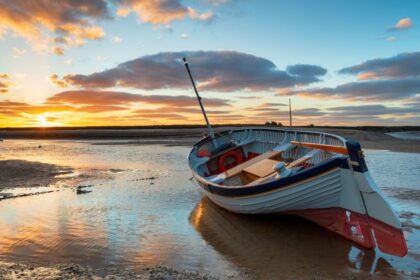If you were to gently tilt Britain and let all its loveliest bits drift to one corner, they would almost certainly come to rest in the South West. This is the sort of place that feels vaguely enchanted, as if the hills might actually be sleeping giants and the sheep are keeping an eye on you just in case. It’s the land of Arthurian legend, clotted cream, brooding tors, sea-salted winds, and small towns that look like they’ve been knitted rather than built.
The South West isn’t in a hurry. It doesn’t need to be. Everything here takes just a touch longer , from walking up a sun-dappled lane to getting served at a beach café where the owner may or may not be surfing at the time. But you don’t mind, because the view is usually outstanding, and there’s probably a scone involved at some point.
Let’s start with Devon and Cornwall
The region’s sun-seeking poster children. They are, geographically speaking, the toes of England , and as with many toes, often overlooked until you get there and realise how wonderfully shaped and unexpectedly useful they are.
Cornwall, in particular, seems to exist halfway between myth and postcard. There are fishing villages that look like the paint’s still drying. Narrow lanes that test your steering and your nerve. Beaches that could pass for the Caribbean if you squint hard enough and ignore the seagulls. And the sea , that gorgeous, endless, aquamarine expanse that crashes against the coast like it’s trying to make a point. Whether you’re watching the waves smash into the cliffs at Land’s End, eating ice cream on the harbour in St Ives, or pottering through the artist-filled charm of Fowey, it’s hard not to feel a little bit in love with it all.
Devon, by contrast, feels like Cornwall’s slightly more restrained sibling. It still has its fair share of coastline, cream teas, and general loveliness, but it tends to say “please” before it knocks your socks off. Here, you’ll find the wild expanse of Dartmoor, where ponies roam free and the fog rolls in as if summoned by a film director with a flair for drama. There are thatched-roof villages, country pubs with low ceilings and high expectations, and walking paths that lead you through such picture-perfect scenery you begin to suspect Photoshop.
Now let us not forget Somerset
Home of cider, ancient mystery, and more music festivals than you can shake a welly at. The Glastonbury Tor rises out of the landscape like something from a fantasy novel, its origins lost in myth and its summit usually populated by a mixture of druids, yoga practitioners, and slightly out-of-breath tourists. Bath, of course, is the jewel in Somerset’s Georgian crown, with its golden stone, Roman ruins, and polite sense of refinement that seems to encourage better posture. You can take the waters (though you might regret it), admire the crescents and colonnades, and imagine you’re in a Jane Austen novel , ideally one where the main character has access to better plumbing.
And then there’s Dorset
The quiet overachiever of the South West. It doesn’t shout about its beauty , it just casually produces some of the most jaw-dropping coastline in the country and gets on with it. The Jurassic Coast, with its fossil-strewn cliffs and dramatic rock arches, is a UNESCO World Heritage Site that looks suspiciously like the setting for a BBC period drama. Inland, you’ll find chalky hills, sleepy towns like Sherborne and Shaftesbury, and countryside that seems tailor-made for gentle rambling followed by enthusiastic lunching.
Wiltshire too deserves a proper nod
It’s got Stonehenge, which somehow manages to remain entirely impressive despite being reduced to a cliché on postcards and novelty socks. But there’s more , Avebury, for one, which has a stone circle so enormous they built a village in the middle of it, presumably before planning permission was invented. There’s an ancient, slightly spooky quality to Wiltshire, as if history isn’t just remembered here, it’s still happening, quietly, in the corners.
Throughout the South West
One thing becomes abundantly clear , they take food seriously here. It’s not flashy , this isn’t London , but it’s fresh, local, and usually slathered in something delicious. There are crab sandwiches that may move you to tears, cheeses so potent they should come with a warning, and cream teas that could start diplomatic incidents (cream first in Cornwall, jam first in Devon , swap them at your peril). The cider is strong, the pub lunches are heroic, and even the service is charmingly relaxed , which is just as well, because the pace of life here is best described as “unbothered.”
But perhaps what makes the South West truly special
Is the sense that you’re somewhere apart , not cut off, exactly, but separate in the way islands feel separate. It has its own rhythm. Its own rules. People here still wave at each other from across lanes, or chat to strangers in the queue for pasties, and they mean it. There’s an openness to it all , a friendliness, a freedom, and a kind of glorious weirdness that other regions often iron out.
You come here to slow down, to breathe, to feel sun-warmed stone under your hand or wind-whipped salt air in your lungs. You come here to rediscover that Britain isn’t just cities and schedules and train delays. It’s also hedgerows and hillforts and family-run tearooms that haven’t changed since 1973.
So if you’re looking for something ancient and beautiful, strange and delicious, comforting and a little bit wild , you’ll find it here. Just don’t forget your wellies. Or your appetite.





